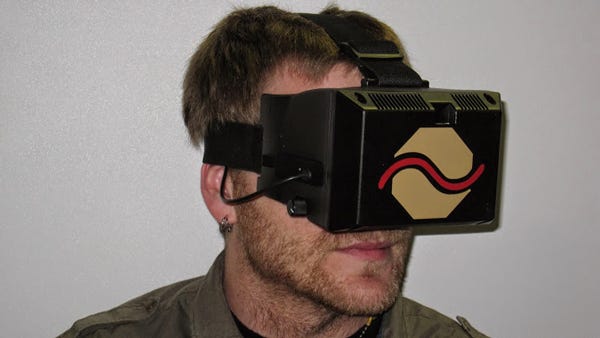3 Remarkable Sports Concussions Solutions
December 4, 2014
Whether through sports such as American football or accidents, a typical weekend can produce 20,000 traumatic brain injuries, according to a researcher at the University of Pittsburgh. Over a year's time, these injuries can cost more than $76 billion.
The previously unknown effects of traumatic brain injuries, or TBIs, have thrown concussions into the spotlight, prompting researchers to seek quick diagnoses and predict long-term effects. The National Football League and General Electric just completed a second round of grants to tech companies and researchers investigating diagnostic devices and software.
The stakes could not be higher for sports such as American football, hockey, and soccer (football for the rest of the world): The NFL alone has proposed a $765 million settlement of concussion-related lawsuits, estimating that nearly a third of its players will end up with a debilitating brain condition, and do so earlier than the general population.
Here are three examples of technologies the Head Health Challenge II grants are helping to fund:
1. Creating Advanced Imaging
Axonal injuries, or broken brain cables, constitute one of the best indicators of traumatic brain injury, according to Walter Schneider, the Pittsburgh researcher. His team, one of the NFL grant winners, developed advanced fusion imaging called High Definition Fiber-Tracking (HDFT) to detect and quantify these broken cables, determine the extent of brain injury, and predict long-term effects. Schneider and others explain the injuries and the detection process in a series of videos, long and short.
Schneider's team plans to deploy its imaging technique to 11 hospitals next year to improve diagnosis of TBI and help determine when patients may safely return to activity. He hopes to use HDFT in other brain conditions such as autism and Alzheimer's disease, and to minimize damage in brain surgery.
2. Advanced Data Analysis
In Silicon Valley's Menlo Park, a software development company called Ayasdi, another grant winner, is working with researchers at the University of California-San Francisco on diffusion tensor imaging. The 10-year-old company specializes in topological data analysis, using mathematics to detect consistent patterns across a large subset of patients.
Using MRIs, university bioinformaticists combine the company's software with patient characteristics, genetic and biological data, to diagnose mild brain and spinal cord injuries before they become severe, explained company spokesman Patrick Rogers.
|
Neuro Kinetics is working with the Food and Drug Administration on a 510(k) de novo process to gain approval for the I-Portal PAS as a concussion diagnostic tool. |
Other researchers are using the software to speed discovery of breast cancer disease patterns and to detect other diseases that fall under the Type 2 diabetes umbrella.
"One of the images has 100,000 digital data points," Rogers said. "As you start to examine those images, it is very, very important to have software that can help you detect anomalies and subtle signals...It's kind of a marriage of computers and medicine that speeds up this analysis."
3. Using Digital Cameras
A small Pittsburgh company called Neuro Kinetics thinks it has a digital camera-based solution for better and faster diagnosis of concussions. Neuro Kinetics recently won a Head Health Challenge II grant to test the company's portable eye-movement detection device, the I-Portal PAS. The company will share the $500,000 grant with the University of Miami Miller School of Medicine and the University of Pittsburgh School of Medicine.
The I-Portal Portable Assessment System, or PAS, is a high-tech version of an eye doctor assessing patients by having them follow the movement of a finger or pencil. The camera measures how quickly the eyes move side to side and up and down, how smoothly they work, and whether they converge.
Nancy Crotti is a contributor to Qmed and MPMN.
Like what you're reading? Subscribe to our daily e-newsletter.
About the Author(s)
You May Also Like



